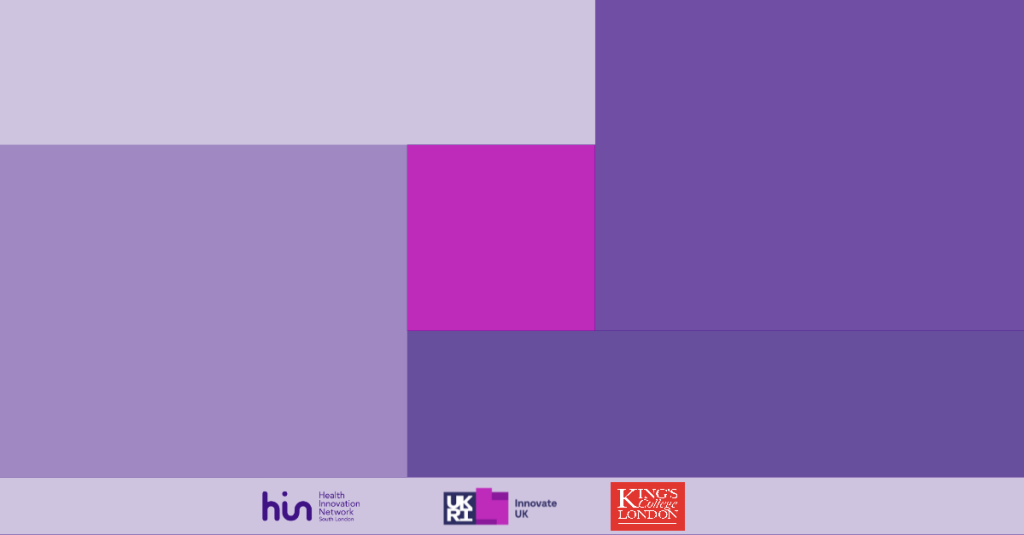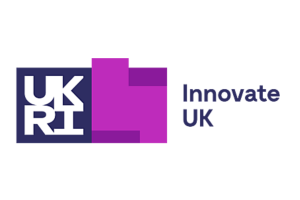Mindset XR Module 12: How to refine research ideas and generate prototypes

Welcome to the Mindset Extended Reality (XR) Innovation Support Programme learning resources, which include three series delivered in conjunction with our expert Mindset-XR programme partners:
• Medical regulation;
• Clinical evidence;
• Lived experience involvement.
Mindset-XR is helping to catalyse the growth of immersive digital mental health solutions in the UK, through funding, tailored support and training. It is delivered by Innovate UK and the Health Innovation Network South London (HIN).
This series focuses on research and clinical evidence, with key insights from King's College London's Institute of Psychiatry, Psychology and Neuroscience. Across a number of modules, these resources will guide you through your research journey, from establishing what you plan to investigate, to conducting research and disseminating your findings.
Outline
Starting your journey from idea to intervention
Understanding what makes workable ideas for development.
Background research
Developing your knowledge of the context for your potential innovation.
Prototyping
Considerations for building a prototype and outlining a process for iterative development.
Welcome to Module 12: How to refine research ideas and generate prototypes. In this section, we're focusing on:
Starting your journey from idea from intervention
As an innovator, you are likely to have many ideas for tools, products or services which you think could be successful. The reality is that only a small number of those ideas are likely to be viable once you properly flesh them out, and that fewer still will go on achieve adoption at a meaningful scale. Globally, it is estimated that half of health technology start-ups fail within the first two years; choosing the wrong innovation to focus on is likely to make long-term success very difficult.
Doing some initial "due diligence" on your ideas will help you to take forward the most promising and realistic options. This process could include:
- Starting with a clearly understood problem that your product solves. Will your innovation solve a problem that nobody has found a solution for yet? Or perhaps it will improve on an imperfect solution - such as a treatment for an illness that currently has a poor success rate. Either way, the problem you are solving must be at the heart of your idea.
- Developing your understanding of your user (and your customer). Do you understand who might use your innovation? What do you know about them? Remember that in health and care your end user might be quite different to your customer; an NHS organisation who might adopt your innovation will make decisions in a very different way to an individual patient. Speaking to clinicians, patients, and other stakeholders will help to build your understanding of the people who might make or break your innovation and the environment they operate within.
- Brainstorming and involving others. It is easy to lose objectivity when you are reviewing your own ideas. Talking to other people with other backgrounds may help to develop your idea and make it more resilient through spotting potential weaknesses or flaws.
- Consider the feasibility of different technical routes to implementation. Think about how your innovation might be developed using extended reality technologies and the feasibility of doing so given the resources available to you. It is also important to consider any human support likely to be needed to implement the innovation.
At this stage there are no defined criteria for taking the innovation forward - you must make a subjective judgement as to whether you want to invest the time and other resources needed to develop your idea into a product or service.
Background research
If the very first stages of investigating your idea rely on making subjective judgements, the next phases will begin to introduce more objective measures of the feasibility of your project.
The author Mark Twain once wrote that there are "no new ideas"; this phase of your research will help to establish whether that applies to your field of innovation and whether there are related endeavours that you should be aware of. These related projects could include research that helps you to develop your idea, or potential blockers in terms of similar innovations which have already achieved commercial success or intellectual property protections.
During this phase of the work, you should:
- Check scientific literature. Academic projects will often provide deep insights into emerging areas of technology and innovation. You can use specialist search engines such as Google Scholar or (for health research) PubMed to find studies and other papers relevant to your work. Given the speed of advances in extended reality, you may also want to check for relevant study protocols - details of planned or in-progress research.
- Check with stakeholders. Clinicians, academics or potential customers may also be aware of work that is going on which has similarities to your idea. Bear in mind that you may not want to share all the details of your idea - at this stage there is nothing to stop people you tell about your plans from "borrowing" them themselves!
Once you have satisfied yourself that your innovation is unique and promising enough to continue with, you can begin developing your first iteration of the innovation itself.
Prototyping
To test and evaluate your innovation, you need something which has enough of a level of functionality to resemble what you hope your innovation will eventually deliver, while avoiding the need to create a fully-featured product. This means you will need to develop one or several prototypes.
The form of your prototype will depend on the specific context of your innovation. Generally, your mindset should be that you should develop something which provides the bare essentials in terms of functionality, given that you will expect to change and iterate the prototype regularly over time. This concept is sometimes know as developing a Minimum Viable Product (MVP). For extended reality, this could mean using techniques such as greyboxing or wireframes rather than fully artworked designs.
Iterative design
Your goal with the prototype will be to use it as a tool to test with end users and rapidly iterate it, improving the product as you go.
In order to guide this process, you will need to have a testing framework (or testing frameworks) in mind from the outset. These should guide the metrics which will influence how you iterate the development of the innovation. For example, you may want to measure user experience, or time spent on a particular element of the interactive platform. These types of information could be collected through the platform you are using (such as measuring clicks with an analytics tool) or through surveys, questionnaires or interviews with users who have tested your prototype.
Throughout the process, it is important to keep an open mind - let the feedback from your users dictate how the development of your innovation progresses. Remember - your innovation is of no use unless it solves a problem for them effectively!
Prototyping frameworks
During your prototyping phase, you may wish to consider a number of frameworks or approaches to apply to your project. These will help refine particular elements of the innovation.
During the early stages of your development, you may wish to use user stories or journey mapping. These will help to build your understanding of what your target users need from your innovation, and how it fits into the wider context of their life or healthcare journey.
Later on, you may want to incorporate usability testing sessions or other related techniques into your iterative design process. These will let you focus on a particular element of the innovation (for example, signing into the platform on their device or setting up their avatar) and refine it in great detail.
Whichever methods you use to structure your prototyping phase, make sure you carefully and systematically record your data and insights, ensuring that they can be called upon for future development work.
Summary
Developing a successful innovation is a long process, but evidence is important to consider right from the start.
Following this module, you should have a basic understanding of the steps you should take to build your own confidence in the usefulness, distinctiveness and effectiveness of the innovation you are working on. Once you are satisfied that you have a potentially impactful innovation, you can start with the process of more formal evaluation, research and evidence generation.

